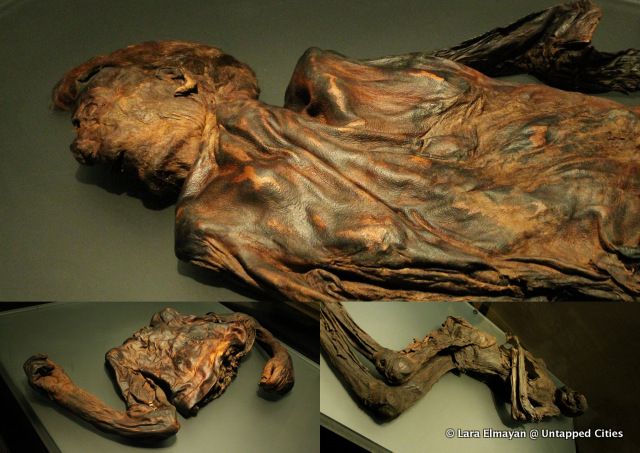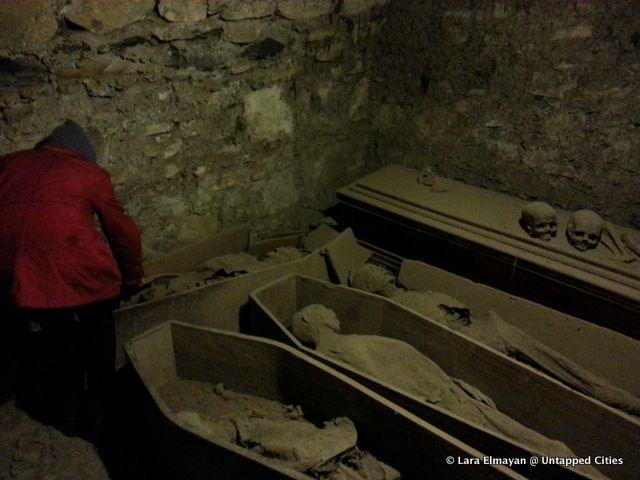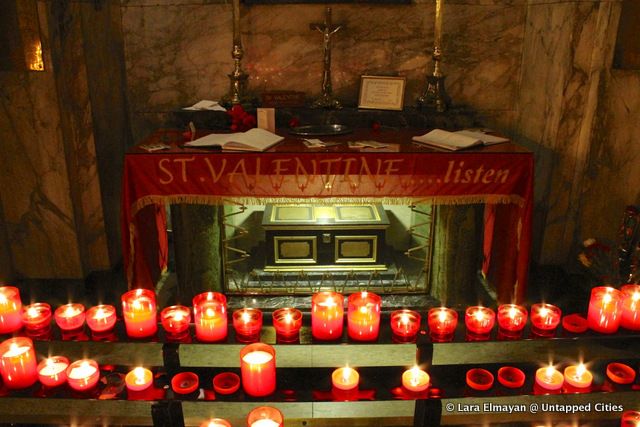Last-Minute NYC Holiday Gift Guide 🎁
We’ve created a holiday gift guide with presents for the intrepid New Yorker that should arrive just in time—


There’s always an undercurrent of tragedy in Dublin, even if its inhabitants face it with unnerving courage. The capital that has weathered so much turmoil and seen so much bloodshed is candidly in touch with its own history, and it hasn’t shied away from any less-than-settling remembrances of its past. In fact, it’s extremely in touch with its dead. With our guide of crypts, museums, remains, and even literary homages to the dead and undead, you can get closer to the history of Dublin and Ireland than you probably ever wanted.

Ireland’s bogs, apparently, have the most incredible natural powers of preservation. The Archeology branch of the National Museum on Kildaire Street is lucky enough to have four mummies dating back to 400 BC that were excavated from the depth of Ireland’s bogs—at least, they have the greater part of four mummies.
Since throwing bodies into bogs was not the typical way of burying the dearly deceased in the Celtic Iron Age, most people found in the bogs are thought have been disposed of there by their horrifyingly sadistic murderers. As such, the bodies, though well-preserved, are mutilated. One, for example, is decapitated, with everything below the waist cut off. The museum’s description of his death sounds like something directly out of a particularly gory and bizarre Criminal Minds episode:
Although the precise sequence cannot be determined, the deceased was decapitated, had his nipples cut and his thorax severed from his abdomen. The cutting of the nipples is highly significant. Sucking a king’s nipples was an ancient Irish form of submission and the mutilation perpetrated on Oldcroghan Man would have rendered him ineligible for kingship.
Some anthropologists contend that the brutality was all part of a ritualistic sacrifice, which is believed to have involved the death of kings during bad harvests. The bog sacrifices might have been wildly excessive, but they’ve at least enabled us come face-to-face with our past.

Handel may have composed The Messiah on the organ there (emphasis on may have), but St. Michan’s Church is far from being one of the most impressive in Dublin. With an unassuming exterior on a street that most would rather bypass, it doesn’t seem like any sort of tourist attraction. That’s why the tour guide will lead you outside of the church, into what looks like a storm shelter on the side of it, down a set of ancient steps, and into the crypts below it, where the dry air caused by limestone walls have left the church’s real draw: its mummies.
The Shear brothers, supposedly hanged, drawn, and quartered by the British for their involvement in the Rising of 1798, lie in closed coffins, overlooked by the death mask of Wolfe Tone. In open coffins are nuns, a potential criminal, and an 800 year-old man who is believed to be a crusader. Since shaking the hands of a crusader was believed to bring good luck, the tour guide, for old time’s sake, might lift the bars between you and the open coffins and encourage you to try for a lifetime of good fortune by rubbing his finger. Feeling lucky?
3. The Natural History branch of the National Museum of Ireland
Since the National Museum’s Merrion Square West building was put together in the second half of the 19th century, lightbulbs have been changed—and that’s about it. The National History Museum is often referred to as “the Dead Zoo,” and not only because it’s almost exclusively filled with taxidermy, preserved animals and insects, skulls, and skeletons.
The museum itself has undergone such little transformation since the days when Bram Stoker and Oscar Wilde went to school around the corner that it stands essentially as a museum about how the Victorians put together natural history museums. Most of their taxidermy and preserved animals haven’t weathered the decades so well—take the terrifying, misshapen sharks hanging from the ceiling, or, for a real fright, the many species of bats whose wings have gone entirely translucent and are starting to crumble.
You most likely won’t meet the literal dead here, but there’s always a little thrill in resurrecting the myth of Dracula, especially in late October. Bram Stoker, Dracula’s author, a Dublin native, and an alumni of nearby Trinity College, didn’t invent the vampire myth, but he did make the vampire an unforgettable part of the Western horror cannon. The three-day festival paying reverence to his story is done though events throughout central Dublin. In Saint Patrick’s Cathedral you can attend a theatrical reading of Dracula, accompanied, oddly enough, by a choral group.

The Irish Carmelite John Spratt gave such rousing sermons during his 1835 visit to Rome that an impressed Pope Gregory XVI decided to give him the remains of the Roman martyr Valentinius, popularly known as Saint Valentine. The officiate of illegal Christian marriages during one of the bloodiest reigns of the Roman Empire was beheaded around the year 270, and when the reliquary containing his remains (including a small vial tinged with his blood) made it to Dublin in 1836, his head was not included.
The unorthodox souvenir found a place in the gorgeous Whitefriar Street Church, but it wasn’t until the 1950s or ’60s that the remains were displayed prominently. A shrine was built to house them for public veneration, with the inevitable guestbook included. It might not be the most romantic place to visit to celebrate love, or the most uplifting story, but couples still journey here to pray before the saint every February 14th.
Also check out our past coverage of Catacombs Around the World and The Capucin Crypt: A Monument of Human Bones and Corpses in Rome. Get in touch with the author @laraelmayan.
Subscribe to our newsletter